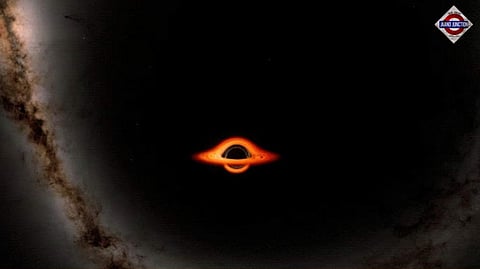

Scientists may have discovered the biggest black hole ever that holds a mass equivalent to that of 36 billion suns. This supermassive black hole is located five billion light-years away from Earth and sits at the centre of a giant galaxy in the Cosmic Horseshoe system, named for its striking horseshoe-shaped ring of light formed by gravitational lensing.
The gigantic black hole's size is close to the theoretical upper limit of what is possible in the universe. It is 10,000 times heavier than the black hole at the centre of our own Milky Way galaxy, Sagittarius A*, which holds a mass of 4.15 million suns.
"This is amongst the top 10 most massive black holes ever discovered, and quite possibly the most massive," said Thomas Collett, study author and a professor at the University of Portsmouth in England.
“Most of the other black hole mass measurements are indirect and have quite large uncertainties, so we really don't know for sure which is biggest. However, we've got much more certainty about the mass of this black hole thanks to our new method.”
Researchers managed to find the 'cosmic behemoth' using a combination of gravitational lensing and stellar kinematics (the study of the motion of stars within galaxies and the speed and way they move around black holes).
Despite being massive in size, the newly-discovered black hole has been dubbed a "dormant" black hole, meaning it is not actively swallowing matter in its surroundings. Notably, Sagittarius A* is also a dormant black hole.
Scientists are of the view that every galaxy in the universe has a supermassive black hole at its centre and that bigger galaxies host bigger ones, known as supermassive black holes.
Current theories surmise that supermassive black holes evolve from initial "seeds" formed either through the collapse of the universe's first stars (light seeds) or by direct gas cloud collapse (heavy seeds). However, these theories have lacked substantial observational backing so far.
In November last year, scientists discovered a supermassive black hole, devouring matter at a phenomenal rate -- over 40 times the theoretical limit, called the Eddington limit.
Named LID-568, the black hole was discovered using data from the James Webb Space Telescope (JWST) and Chandra X-ray Observatory. The black hole's hunger to consume matter challenged the existing models by suggesting that these bodies are capable of exceeding the Eddington limits.
